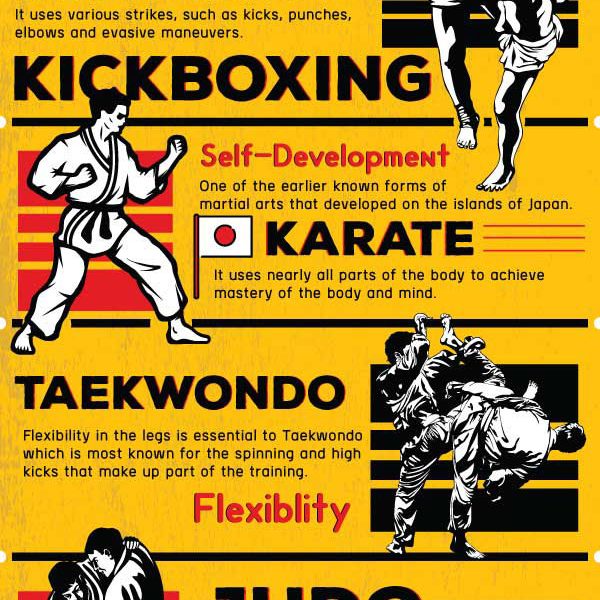The Journey And Transformation Of Martial Arts: Exploring Its Historic Structures And Modern-Day Methods
The Journey And Transformation Of Martial Arts: Exploring Its Historic Structures And Modern-Day Methods
Blog Article
Web Content Writer-Brooks Ross
Step into the globe of martial arts, where ancient origins and modern strategies clash in a thrilling trip of discipline and self-discovery.
As you explore the background and evolution of this captivating art type, prepare to be mesmerized by the social impacts, technological improvements, and extensive ideology that have actually shaped it over centuries.
From the field of battles of old worlds to the training premises of today, martial arts have actually stood the test of time, continuously adjusting and expanding.
Each strike, each motion, carries with it the weight of numerous years of practice and wisdom, gave via generations. This is a story of resilience, of warriors who looked for not only physical prowess, but additionally inner strength and consistency.
Join us on this remarkable exploration as we uncover the secrets, the tales, and the transformational power of martial arts.
Prepare yourself to be influenced, tested, and for life changed by the history and advancement of martial arts.
Cultural Impacts on Martial Arts
As you check out the history and development of martial arts, you'll promptly discover the interesting ways in which cultural influences have shaped these battle strategies.
From the old civilizations of China and India to the more recent growths in Japan and Brazil, martial arts have been heavily affected by the cultures in which they stemmed.
For example, Chinese martial arts, such as Martial Art and Tai Chi, are deeply rooted in the ideology of Taoism and the principle of Yin and Yang.
On the other hand, Japanese martial arts, like Karate and Judo, mirror the samurai warrior traditions and the worths of discipline and honor.
In a similar way, Brazilian martial art, Capoeira, combines elements of African dancing and music, reflecting the social heritage of African servants in Brazil.
These cultural influences not only give each martial art its unique qualities however additionally provide a deeper understanding of the historic and social contexts in which they progressed.
Technological Advancements and Martial Arts
With the rise of sophisticated weapons and cutting-edge training tools, you've had the ability to enhance your abilities and adapt to the ever-changing battle landscape.
good criminal attorneys near me have actually reinvented the way martial arts are practiced and instructed. Virtual reality simulations now permit you to train in practical combat situations without the risk of physical damage. High-speed electronic cameras catch every action, enabling you to assess and perfect your strategies. Wearable tools monitor your heart rate, breathing, and muscle activation, supplying immediate responses on your efficiency.
In addition, the development of specific equipment, such as resistance bands and dexterity ladders, has enabled you to improve your speed, strength, and dexterity. These technical improvements have not just made training more efficient however have additionally pressed the boundaries of what is feasible in martial arts, allowing you to get to new heights in your technique.
The Ideology and Concepts of Martial Arts
The ideology and concepts of martial arts are deeply rooted fit your frame of mind and instilling technique, focus, and respect in your practice.
1. State of mind: Martial Arts shows you to establish a solid and durable mindset. It enables you to conquer obstacles both on and off the floor covering, pressing your limitations and persisting despite hardship.
2. Self-control: Martial Arts needs technique and self-discipline. Via normal training and adherence to stringent policies and strategies, you discover to regulate your impulses and develop a strong job ethic.
3. Focus: Martial Arts calls for extreme focus and concentration. By educating your mind to be existing in the moment, you improve your capacity to respond swiftly and successfully throughout fight circumstances.
4. Respect: Martial Arts stresses regard for oneself, instructors, educating companions, and opponents. It shows you to value the skills and experiences of others, cultivating a feeling of sociability and sportsmanship.
Final thought
Congratulations on completing your journey via the fascinating globe of martial arts! Throughout this expedition, you have actually observed the rich background and impressive development of these battle practices.
From their old origins to the modern-day methods we see today, martial arts have been shaped by social influences.
The assimilation of technology has actually likewise played a substantial role in revolutionizing the means martial arts are educated and practiced in the here and now day.
Nonetheless, it is very important to keep in mind that martial arts are greater than simply physical combat. They include profound approaches and leading principles that exceed the mere act of fighting.
Take a moment to reflect on this obsolete adventure and appreciate just how the legacy of martial arts continues to flourish in today, transcending time and boundaries.
